Abstract
1. Prolonged observation of a high-contrast grating pattern causes an apparent shift in the spatial frequency of gratings subsequently viewed with the same retinal region. Gratings of higher and lower frequency than the adapting pattern seem, respectively, higher and lower than in fact they are.
2. There is no significant after-effect at the adapting frequency itself nor at frequencies more than two octaves away.
3. For very low adapting frequencies, the after-effect remains centred at about 3·0 c/deg and declines in strength as the adapting frequency is successively lowered.
4. The magnitude of the after-effect increases with the contrast of the adapting grating and the length of time spent in adaptation. It takes several hours to recover completely from 30 min adaptation.
5. The phenomenon is orientation-specific: a horizontal adapting grating has no effect on vertical test gratings. There is partial interocular transfer of the after-effect.
6. These findings provide further evidence that the visual system of man, like those of the cat and the monkey, contains neurones selectively sensitive to the orientation and dimensions of retinal images, and that these adaptable cells are actually involved in the encoding and perception of the size of simple patterns.
Full text
PDF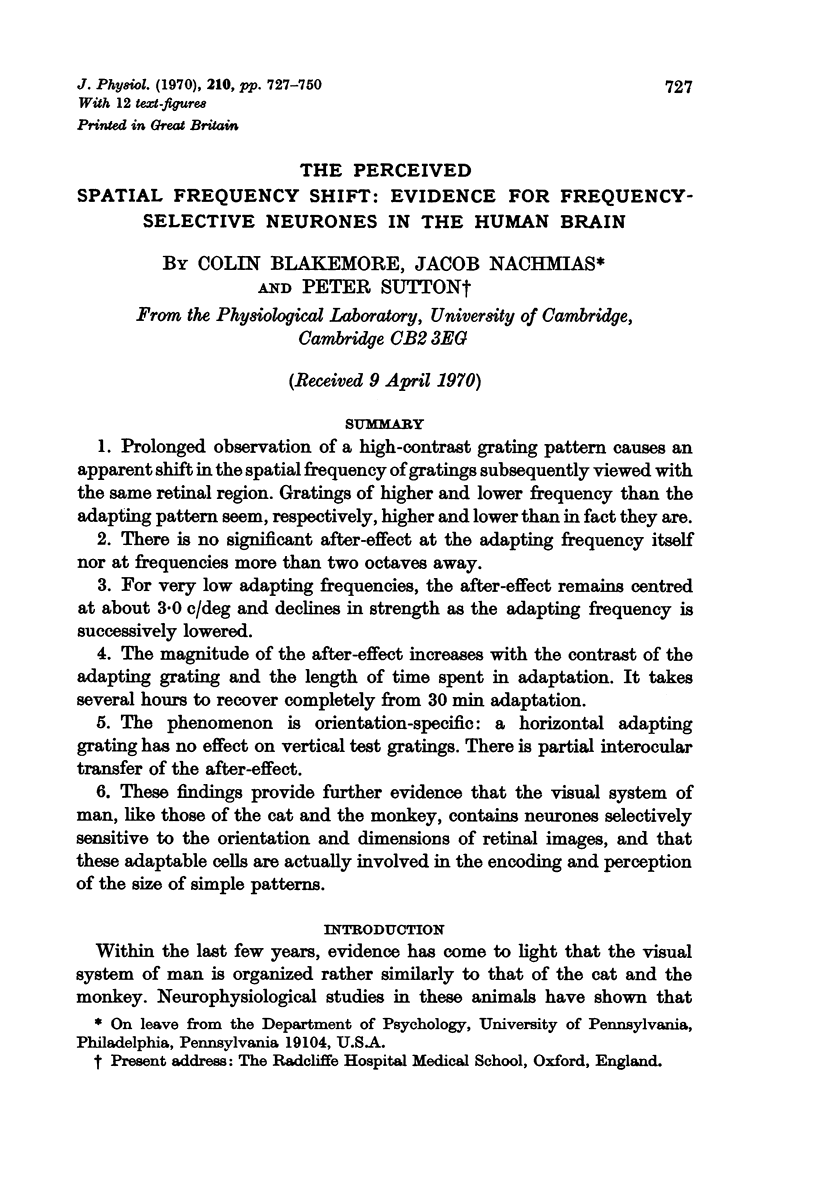
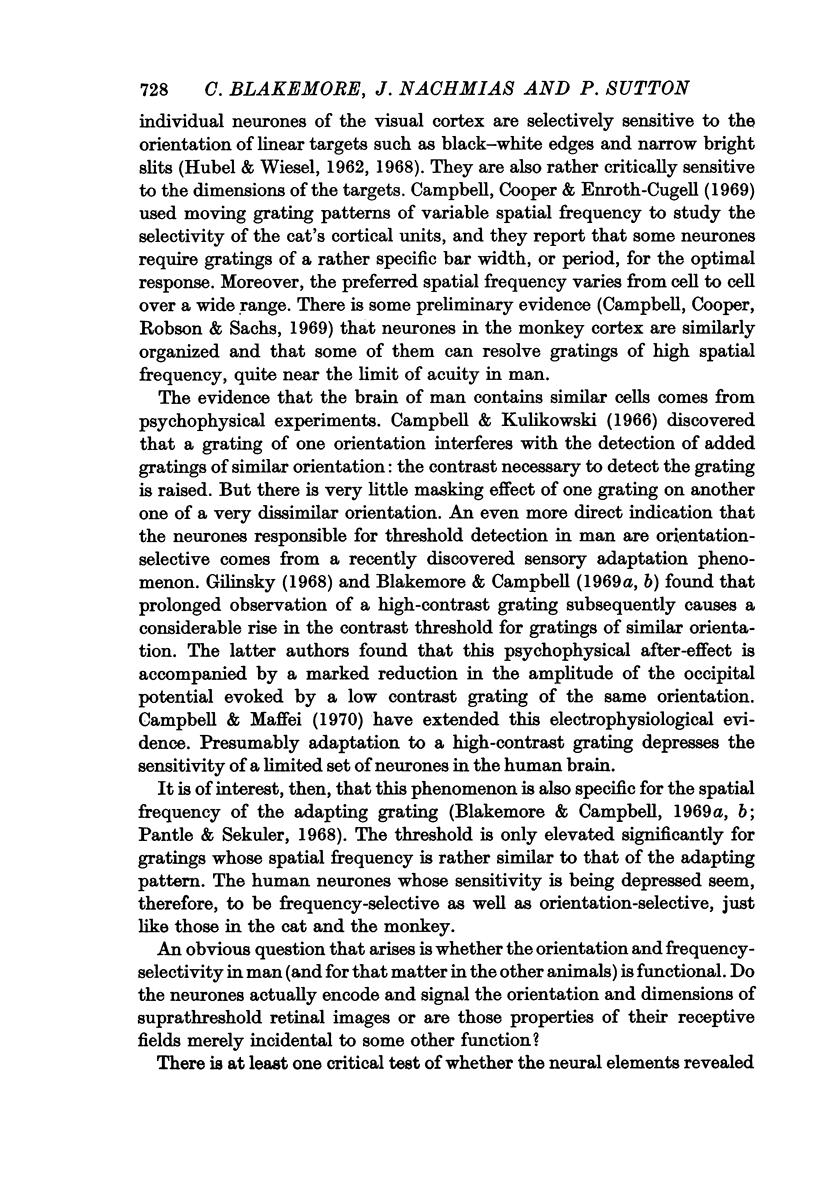
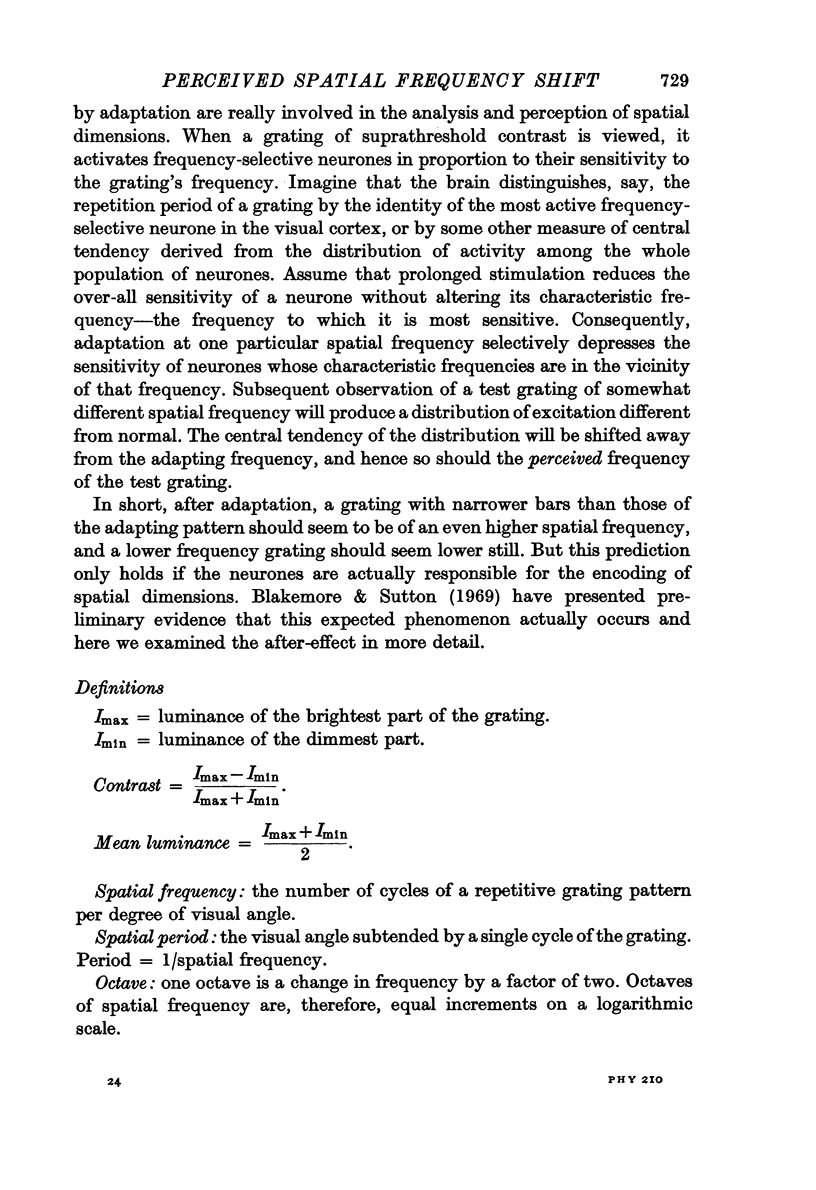
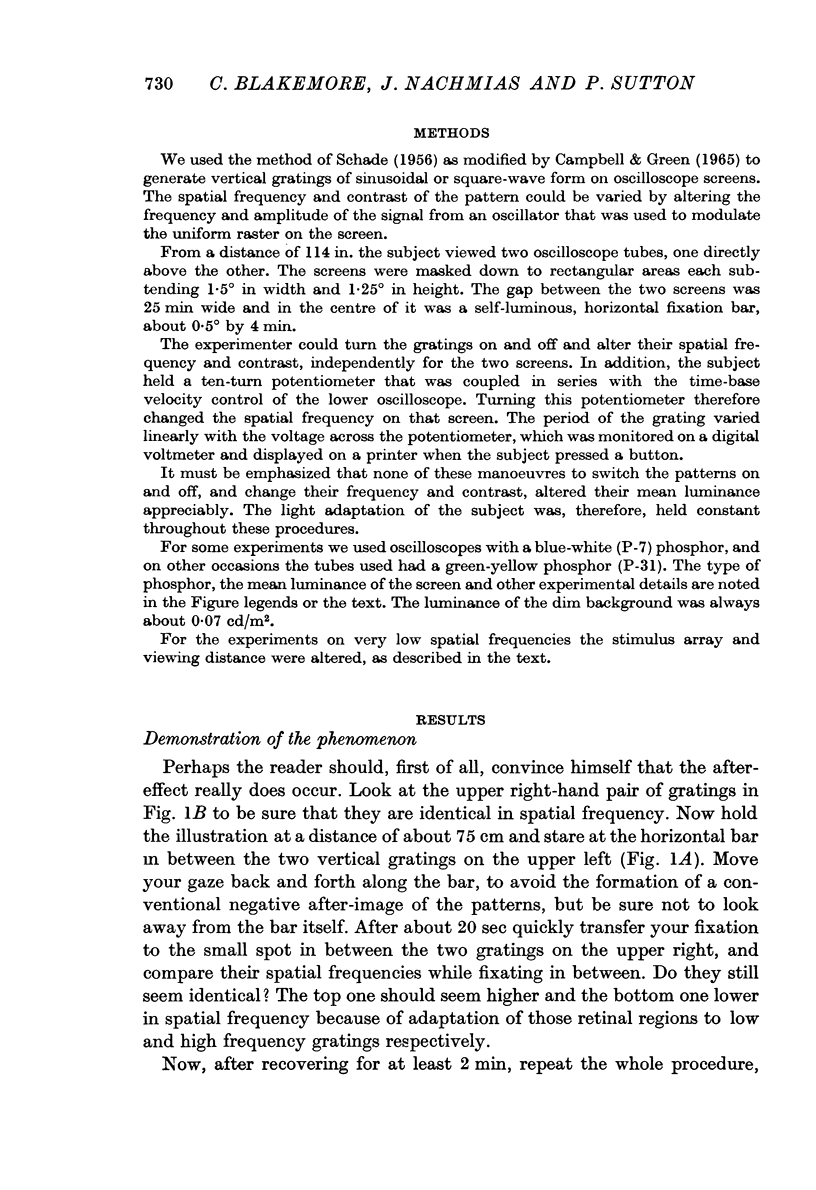
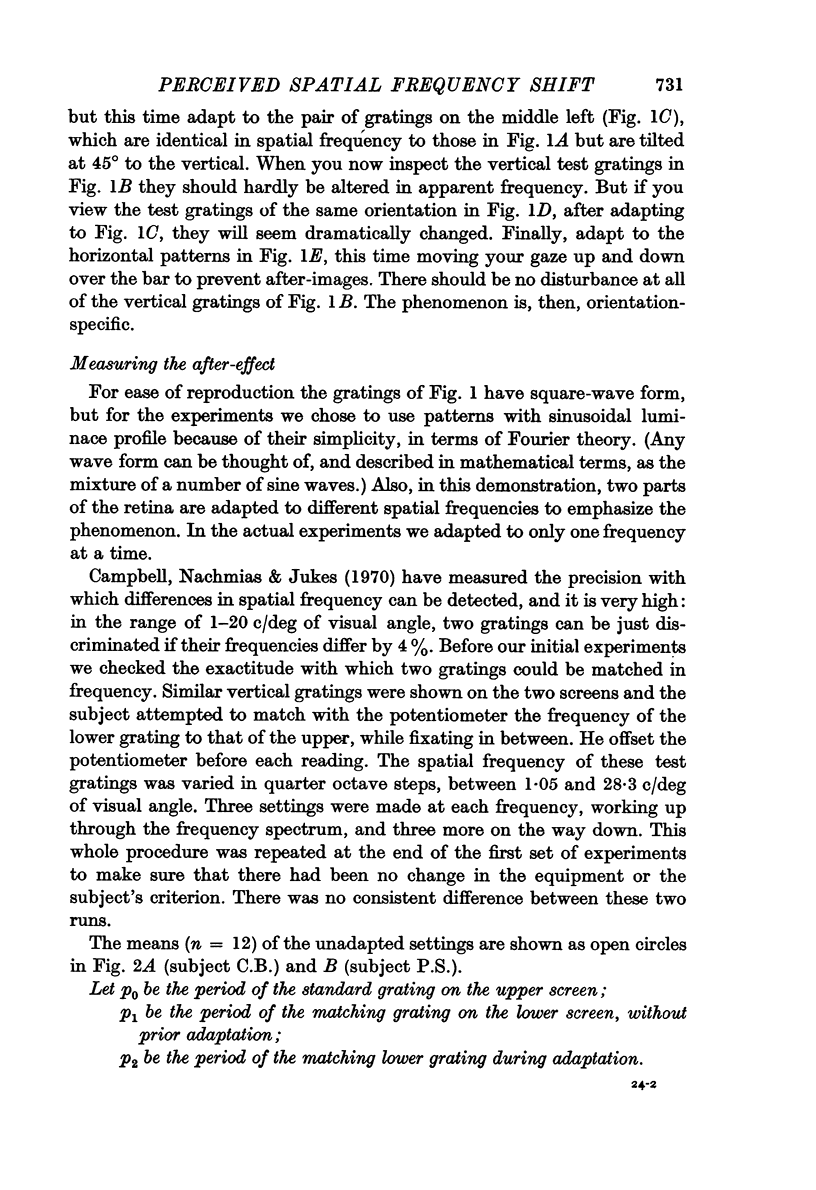
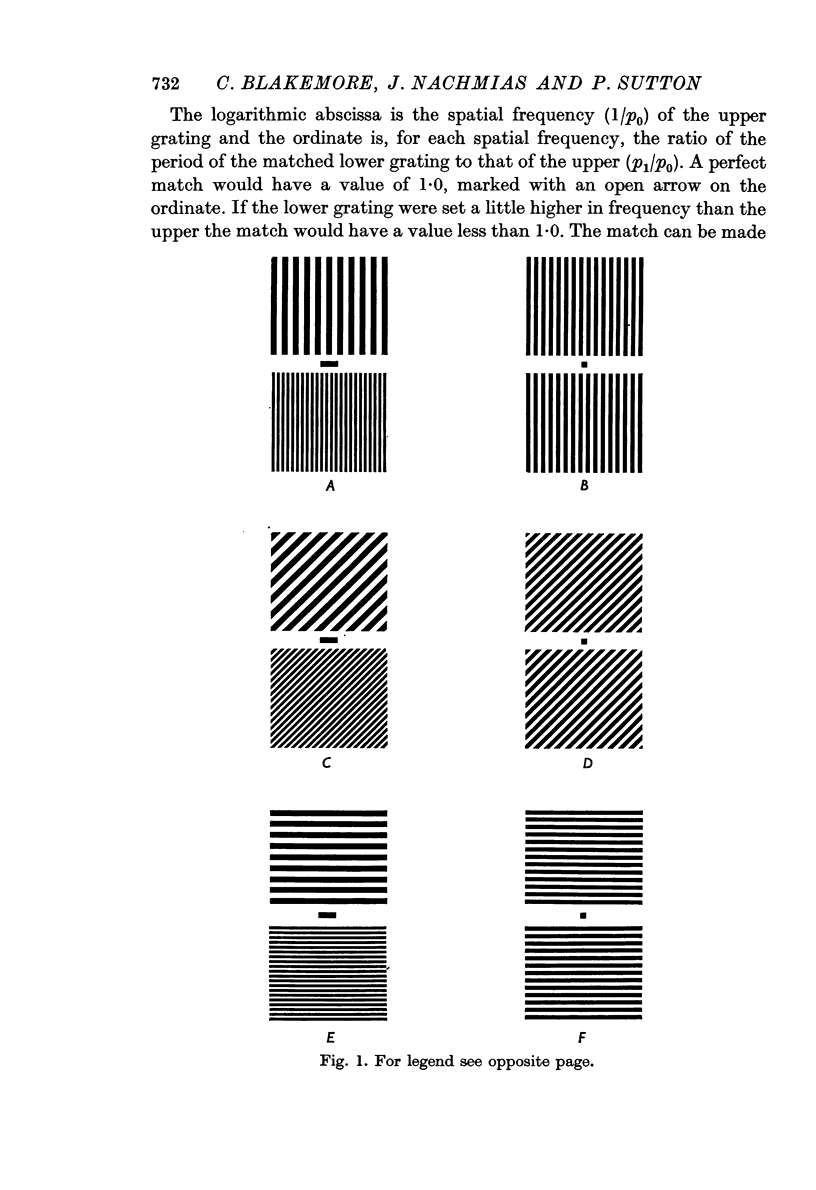
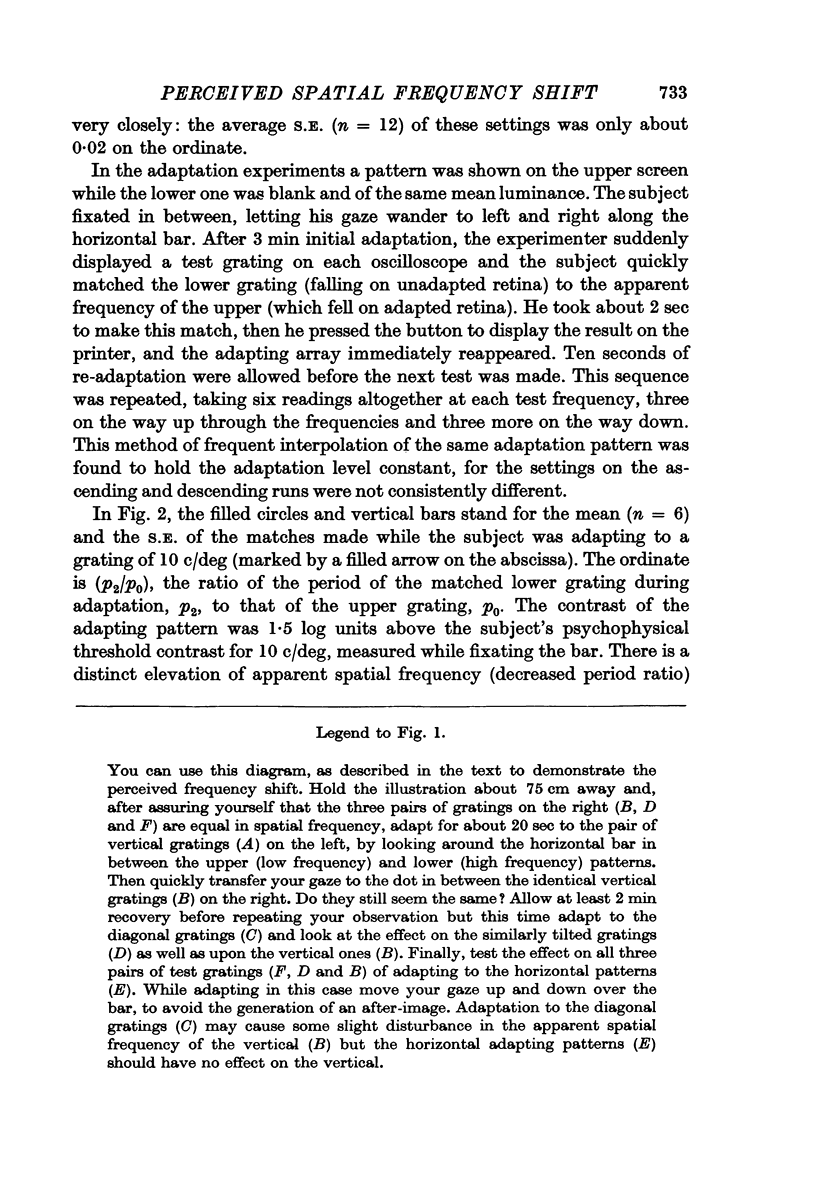
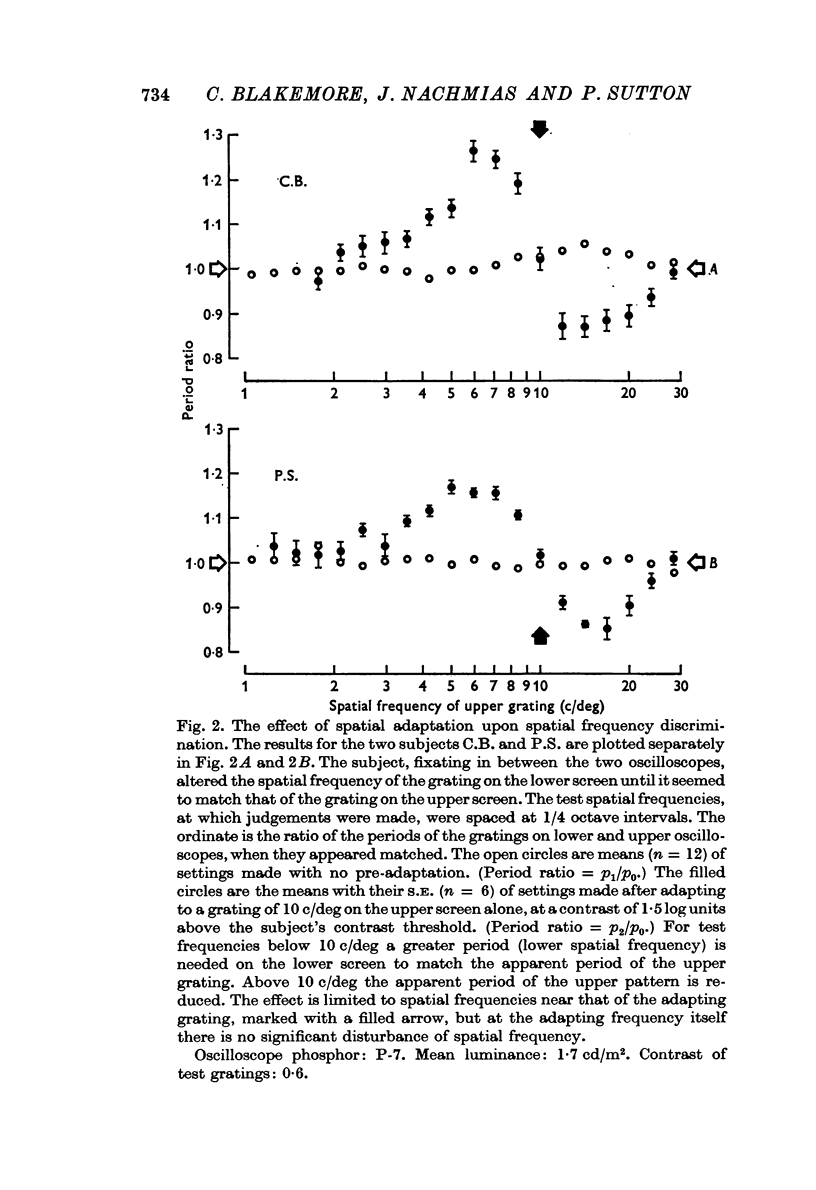
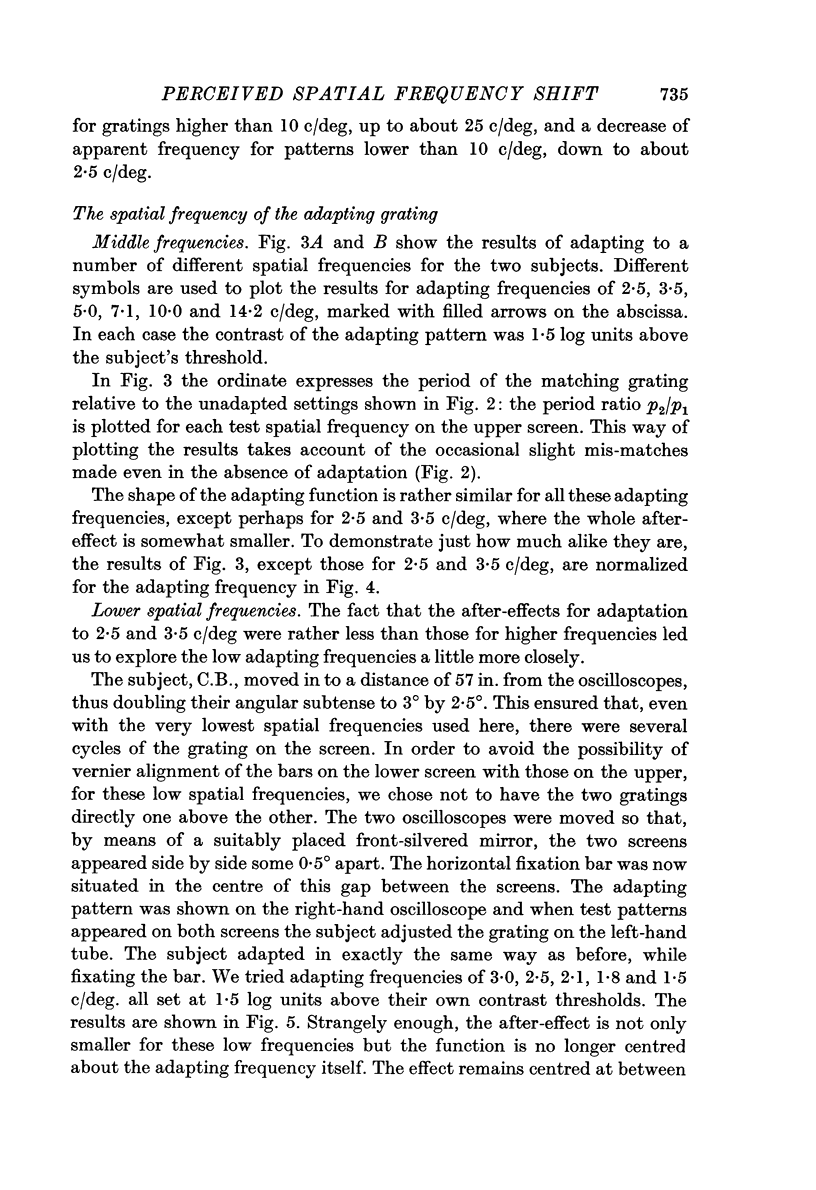
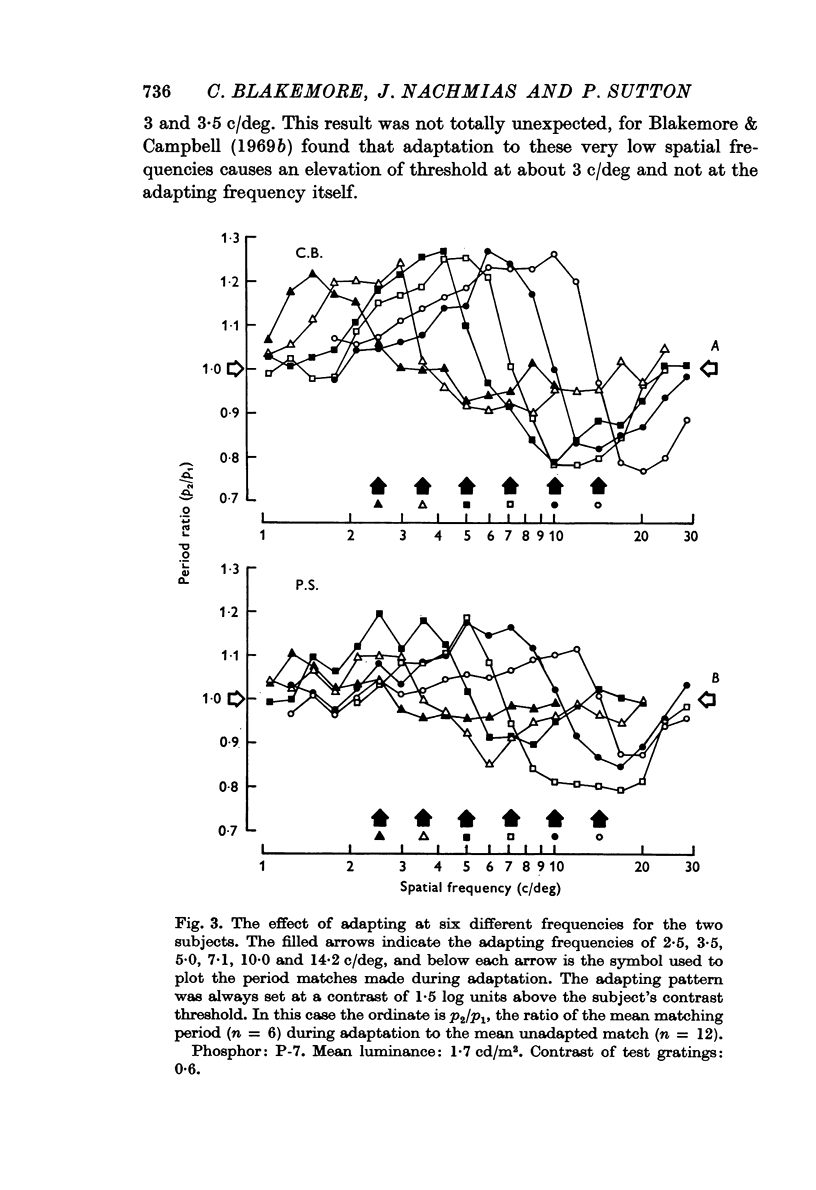
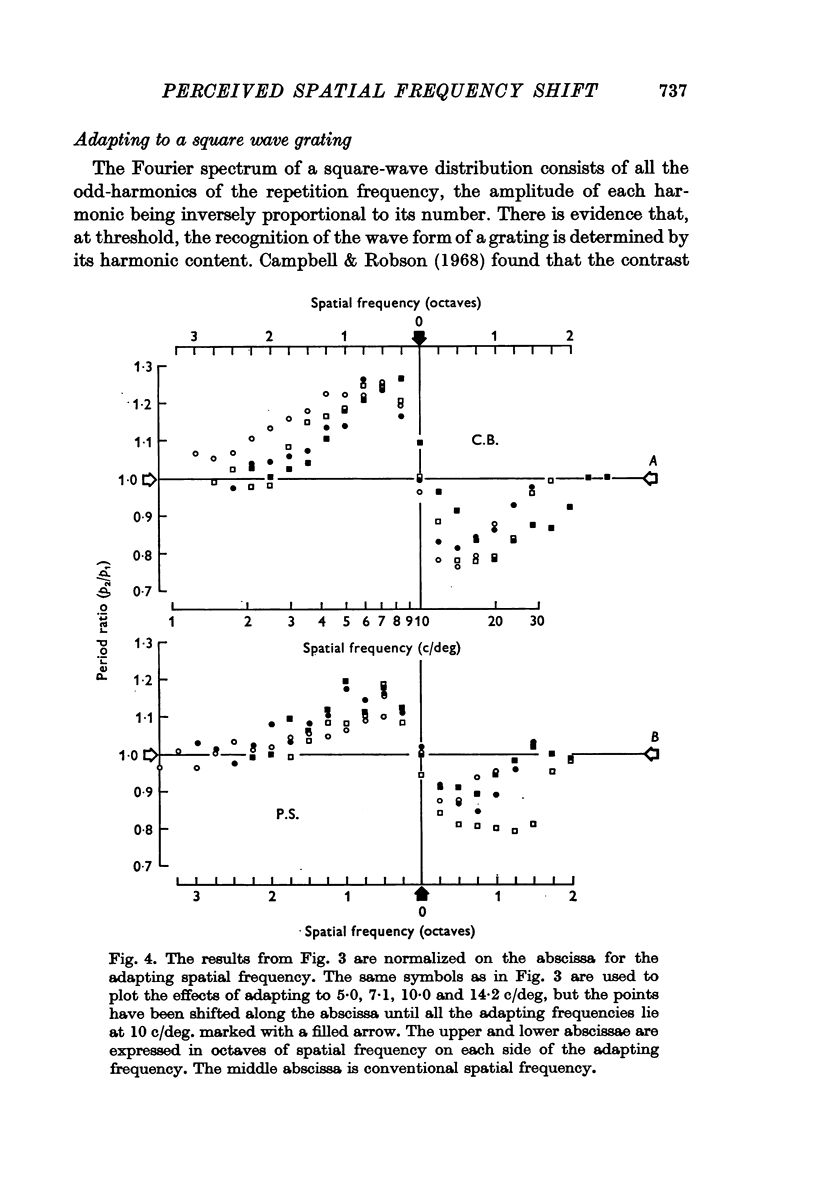

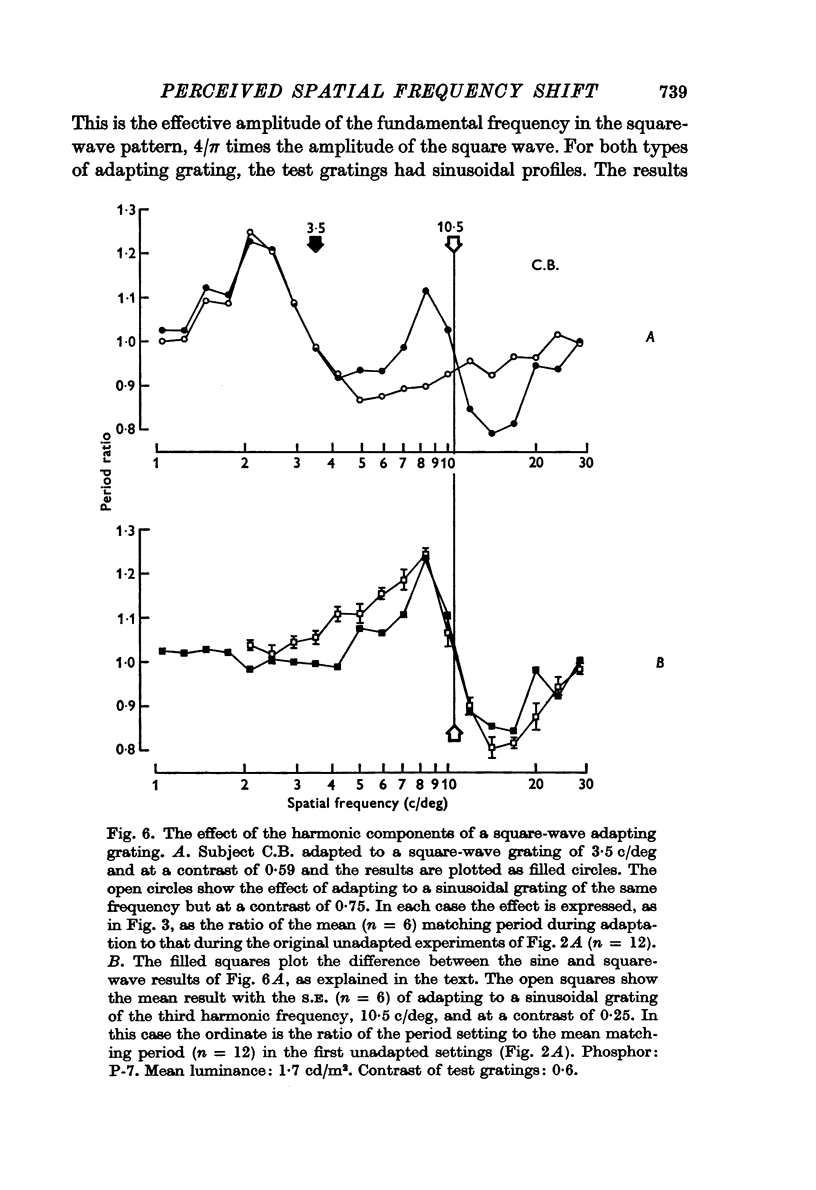
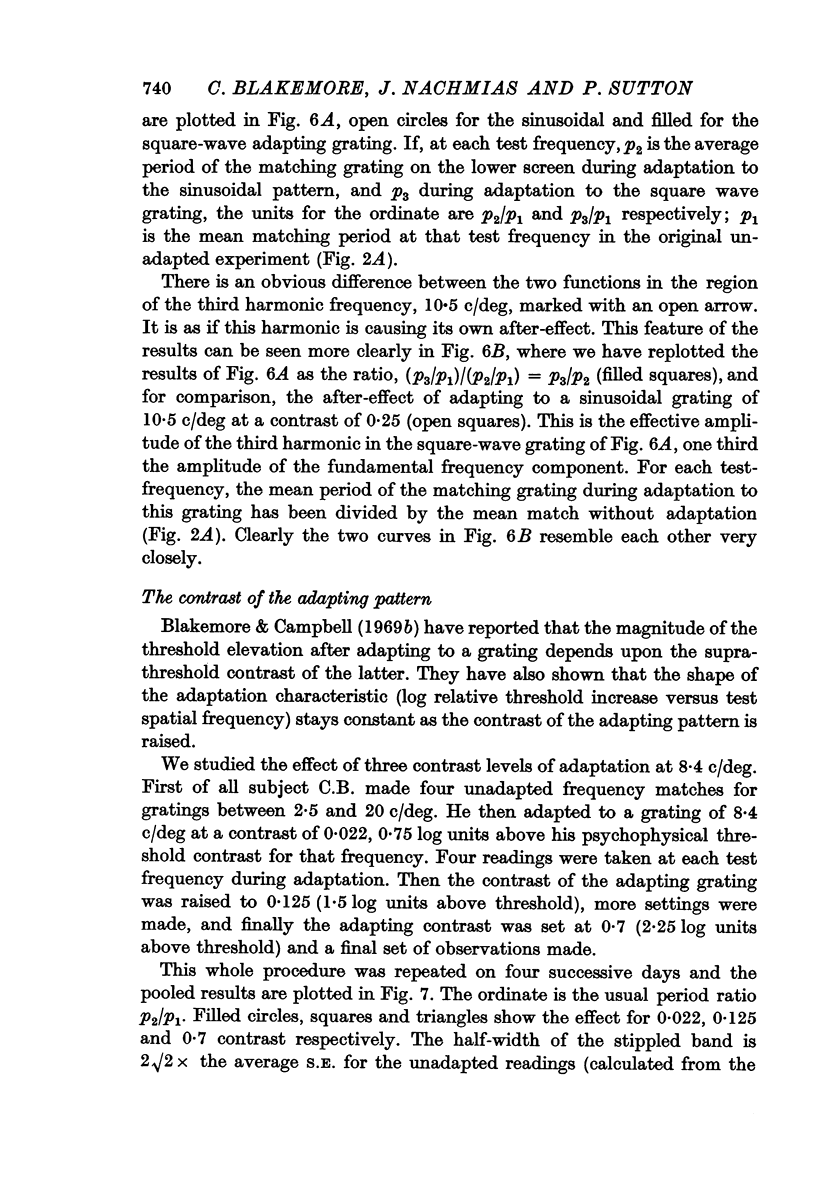
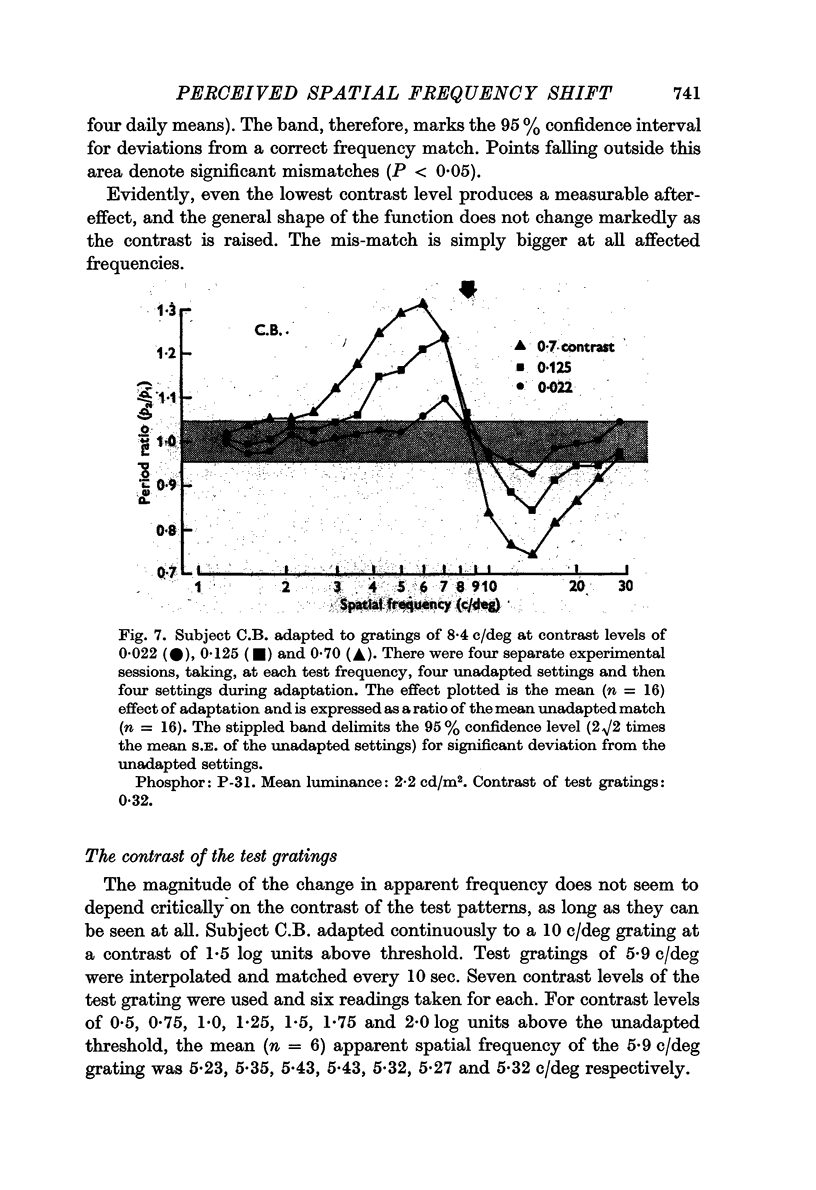
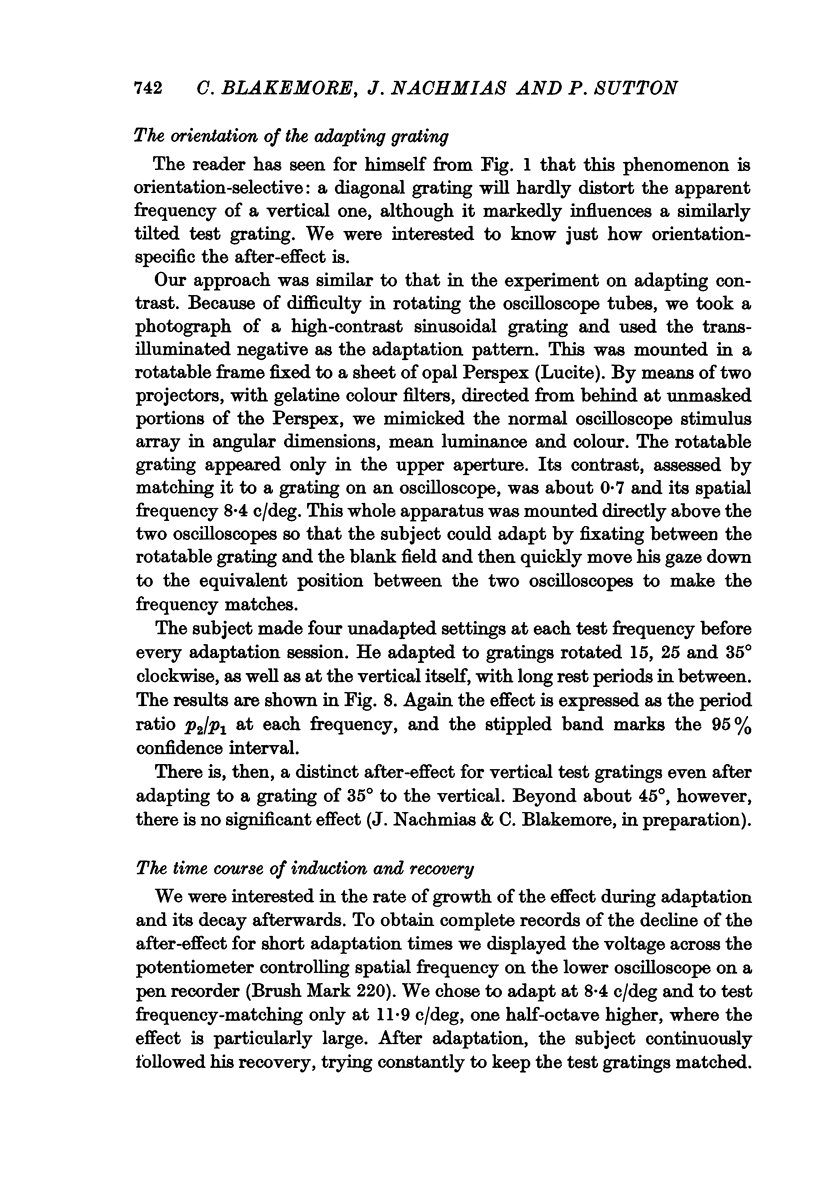
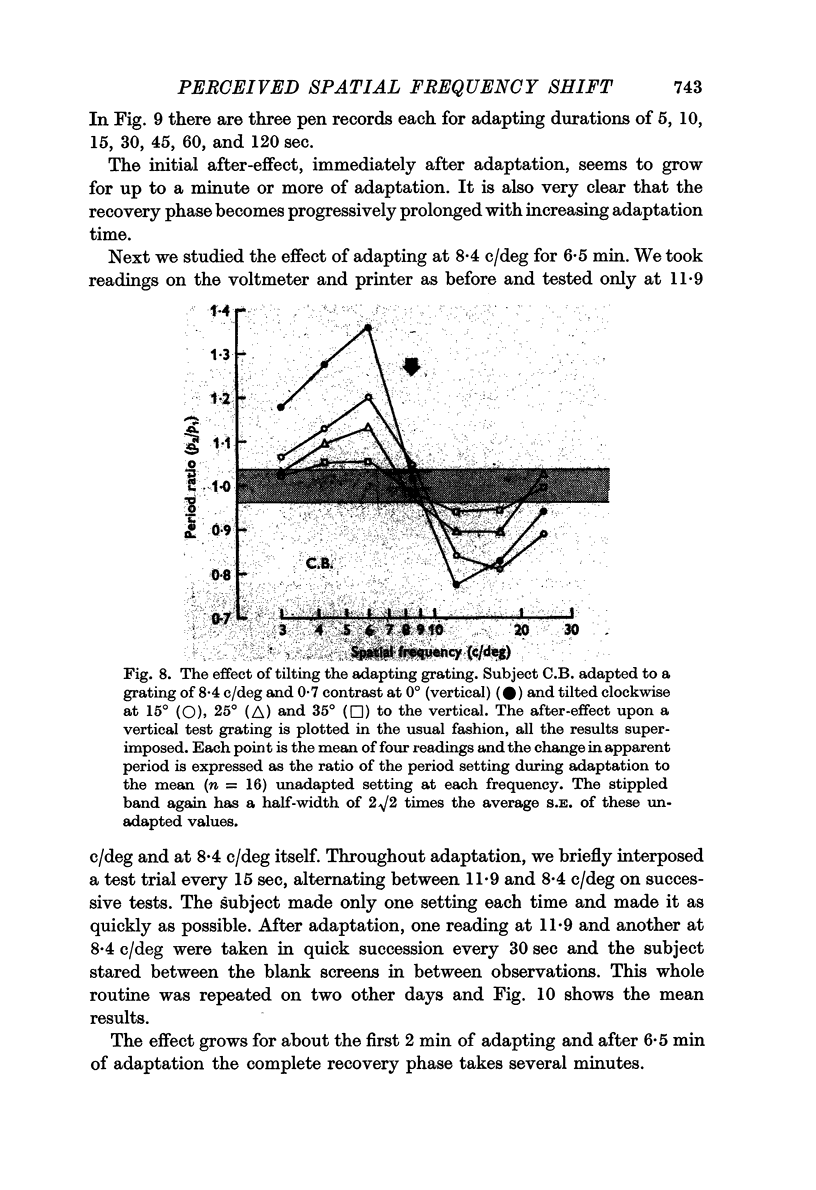

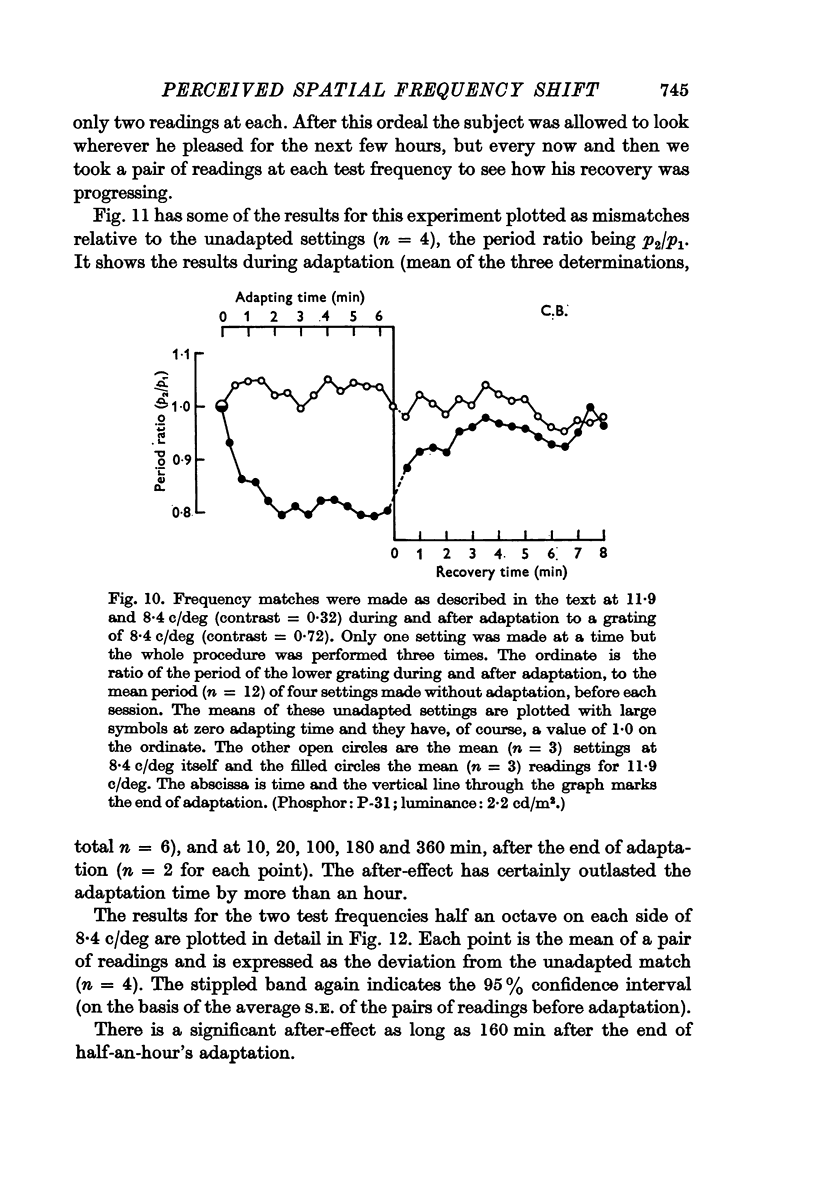
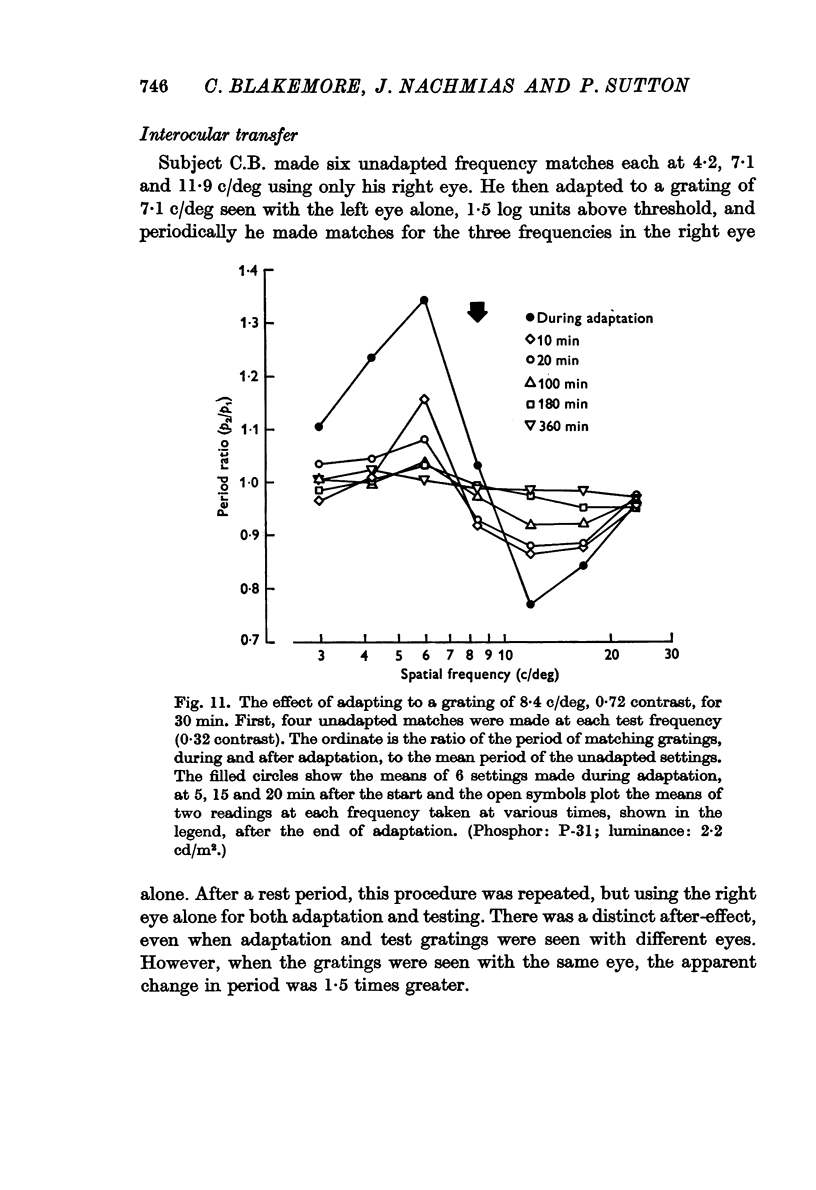
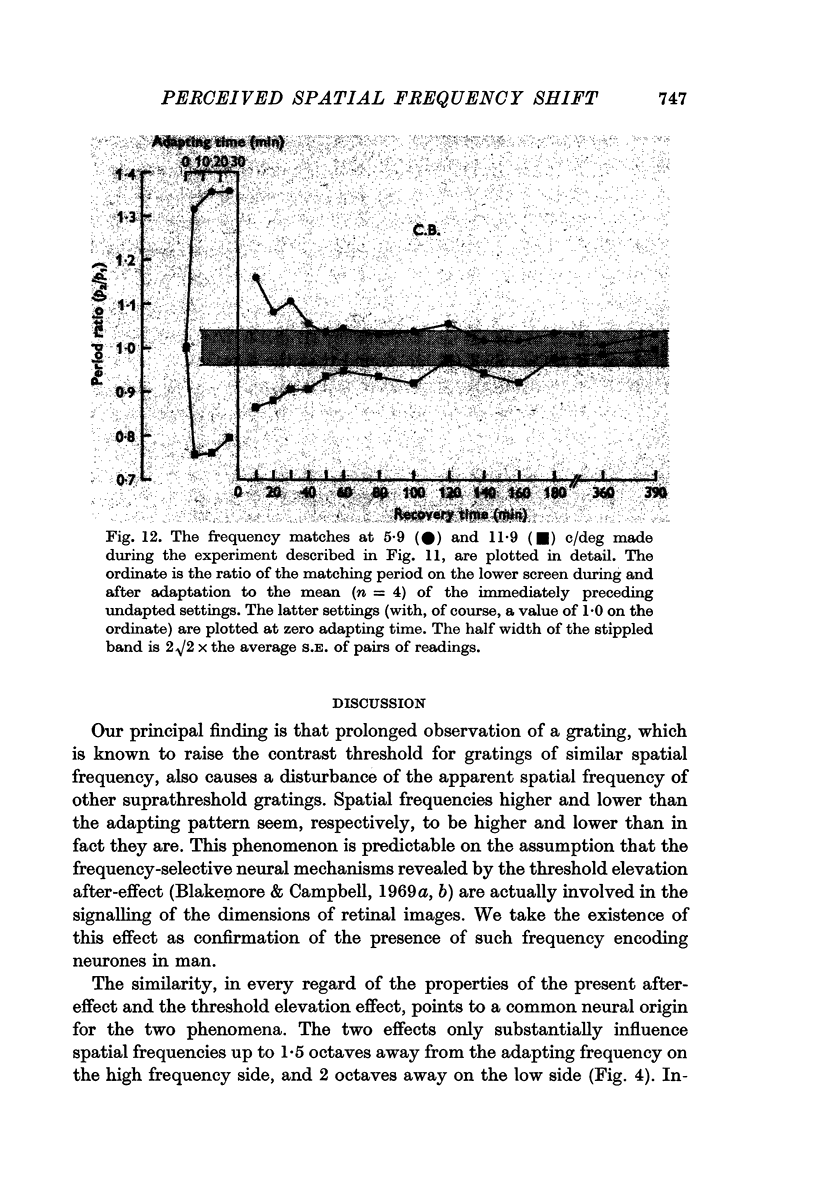
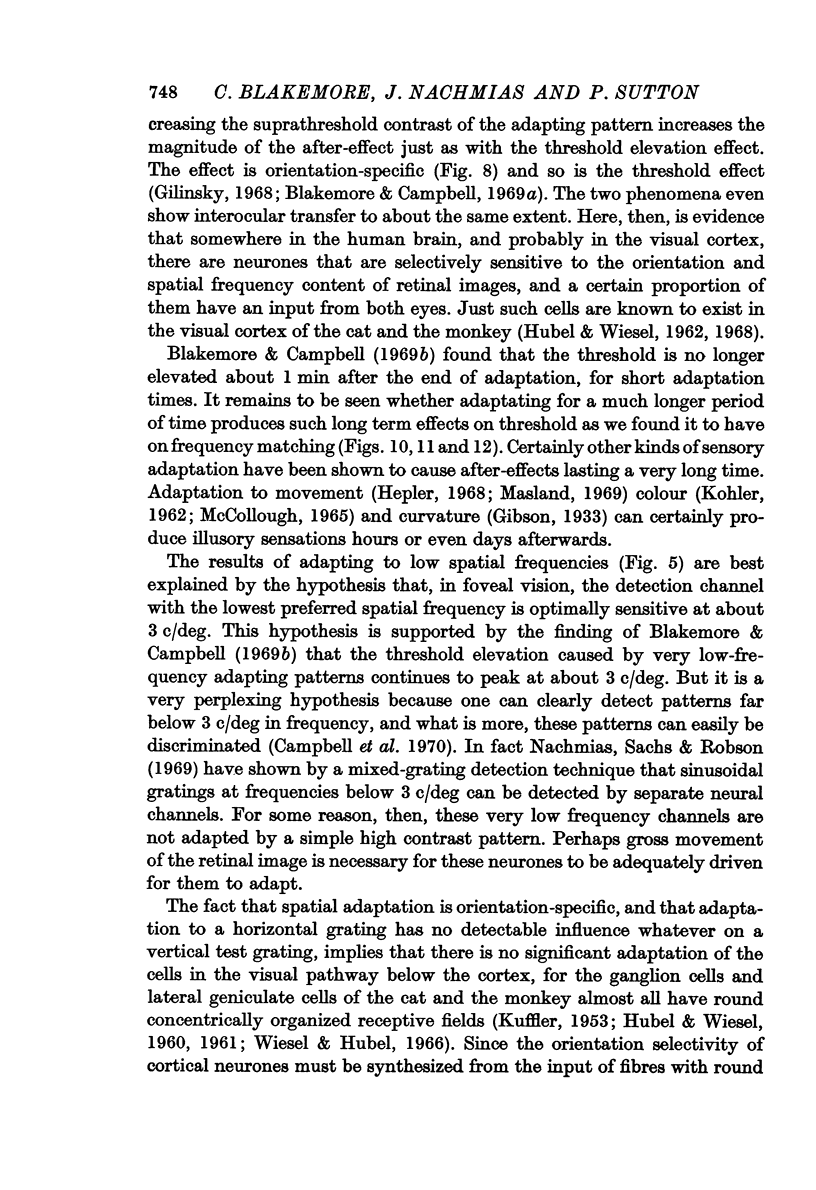
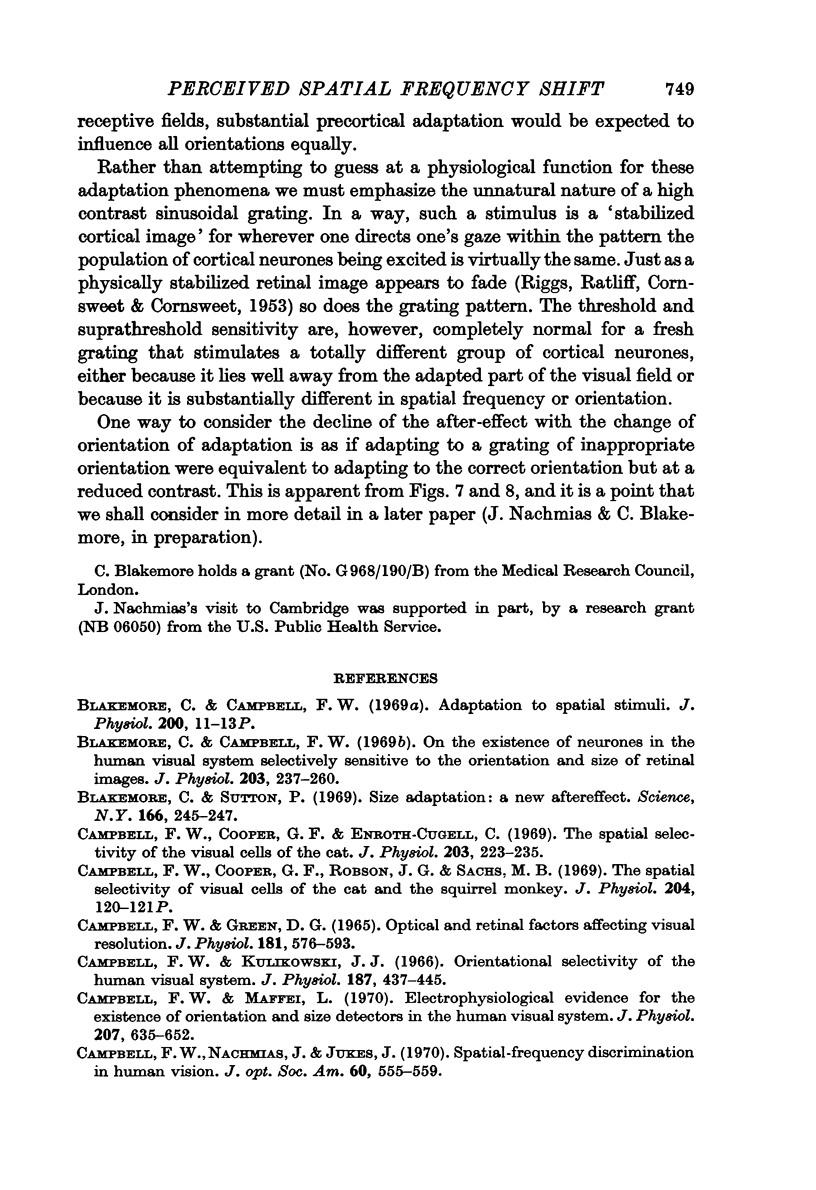
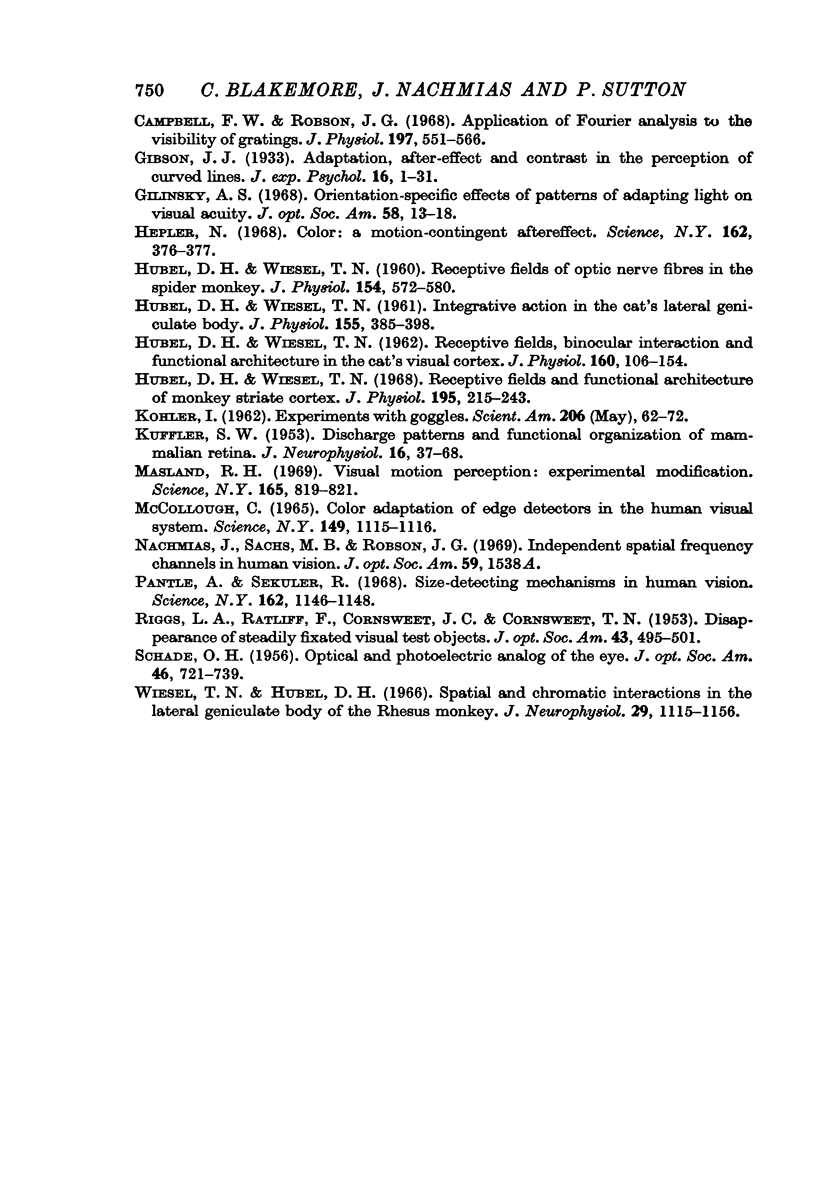
Selected References
These references are in PubMed. This may not be the complete list of references from this article.
- Blakemore C., Campbell F. W. Adaptation to spatial stimuli. J Physiol. 1969 Jan;200(1):11P–13P. [PubMed] [Google Scholar]
- Blakemore C., Campbell F. W. On the existence of neurones in the human visual system selectively sensitive to the orientation and size of retinal images. J Physiol. 1969 Jul;203(1):237–260. doi: 10.1113/jphysiol.1969.sp008862. [DOI] [PMC free article] [PubMed] [Google Scholar]
- Blakemore C., Sutton P. Size adaptation: a new aftereffect. Science. 1969 Oct 10;166(3902):245–247. doi: 10.1126/science.166.3902.245. [DOI] [PubMed] [Google Scholar]
- Campbell F. W., Cooper G. F., Enroth-Cugell C. The spatial selectivity of the visual cells of the cat. J Physiol. 1969 Jul;203(1):223–235. doi: 10.1113/jphysiol.1969.sp008861. [DOI] [PMC free article] [PubMed] [Google Scholar]
- Campbell F. W., Green D. G. Optical and retinal factors affecting visual resolution. J Physiol. 1965 Dec;181(3):576–593. doi: 10.1113/jphysiol.1965.sp007784. [DOI] [PMC free article] [PubMed] [Google Scholar]
- Campbell F. W., Kulikowski J. J. Orientational selectivity of the human visual system. J Physiol. 1966 Nov;187(2):437–445. doi: 10.1113/jphysiol.1966.sp008101. [DOI] [PMC free article] [PubMed] [Google Scholar]
- Campbell F. W., Maffei L. Electrophysiological evidence for the existence of orientation and size detectors in the human visual system. J Physiol. 1970 May;207(3):635–652. doi: 10.1113/jphysiol.1970.sp009085. [DOI] [PMC free article] [PubMed] [Google Scholar]
- Campbell F. W., Nachmias J., Jukes J. Spatial-frequency discrimination in human vision. J Opt Soc Am. 1970 Apr;60(4):555–559. doi: 10.1364/josa.60.000555. [DOI] [PubMed] [Google Scholar]
- Campbell F. W., Robson J. G. Application of Fourier analysis to the visibility of gratings. J Physiol. 1968 Aug;197(3):551–566. doi: 10.1113/jphysiol.1968.sp008574. [DOI] [PMC free article] [PubMed] [Google Scholar]
- Gilinsky A. S. Orientation-specific effects of patterns of adapting light on visual acuity. J Opt Soc Am. 1968 Jan;58(1):13–18. doi: 10.1364/josa.58.000013. [DOI] [PubMed] [Google Scholar]
- HUBEL D. H., WIESEL T. N. Integrative action in the cat's lateral geniculate body. J Physiol. 1961 Feb;155:385–398. doi: 10.1113/jphysiol.1961.sp006635. [DOI] [PMC free article] [PubMed] [Google Scholar]
- HUBEL D. H., WIESEL T. N. Receptive fields of optic nerve fibres in the spider monkey. J Physiol. 1960 Dec;154:572–580. doi: 10.1113/jphysiol.1960.sp006596. [DOI] [PMC free article] [PubMed] [Google Scholar]
- HUBEL D. H., WIESEL T. N. Receptive fields, binocular interaction and functional architecture in the cat's visual cortex. J Physiol. 1962 Jan;160:106–154. doi: 10.1113/jphysiol.1962.sp006837. [DOI] [PMC free article] [PubMed] [Google Scholar]
- Hubel D. H., Wiesel T. N. Receptive fields and functional architecture of monkey striate cortex. J Physiol. 1968 Mar;195(1):215–243. doi: 10.1113/jphysiol.1968.sp008455. [DOI] [PMC free article] [PubMed] [Google Scholar]
- KOHLER I. Experiments with goggles. Sci Am. 1962 May;206:62–72. doi: 10.1038/scientificamerican0562-62. [DOI] [PubMed] [Google Scholar]
- KUFFLER S. W. Discharge patterns and functional organization of mammalian retina. J Neurophysiol. 1953 Jan;16(1):37–68. doi: 10.1152/jn.1953.16.1.37. [DOI] [PubMed] [Google Scholar]
- McCollough C. Color Adaptation of Edge-Detectors in the Human Visual System. Science. 1965 Sep 3;149(3688):1115–1116. doi: 10.1126/science.149.3688.1115. [DOI] [PubMed] [Google Scholar]
- Pantle A., Sekuler R. Size-detecting mechanisms in human vision. Science. 1968 Dec 6;162(3858):1146–1148. doi: 10.1126/science.162.3858.1146-a. [DOI] [PubMed] [Google Scholar]
- RIGGS L. A., RATLIFF F., CORNSWEET J. C., CORNSWEET T. N. The disappearance of steadily fixated visual test objects. J Opt Soc Am. 1953 Jun;43(6):495–501. doi: 10.1364/josa.43.000495. [DOI] [PubMed] [Google Scholar]
- SCHADE O. H., Sr Optical and photoelectric analog of the eye. J Opt Soc Am. 1956 Sep;46(9):721–739. doi: 10.1364/josa.46.000721. [DOI] [PubMed] [Google Scholar]
- Wiesel T. N., Hubel D. H. Spatial and chromatic interactions in the lateral geniculate body of the rhesus monkey. J Neurophysiol. 1966 Nov;29(6):1115–1156. doi: 10.1152/jn.1966.29.6.1115. [DOI] [PubMed] [Google Scholar]


